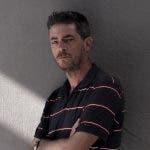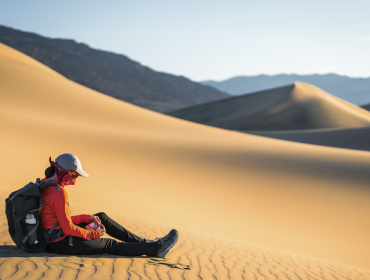As a photographer working in the world of sports, you have to be ready for anything. This means you need to be focused and knowledgeable about the sport you’re covering. You also need to be prepared with the right gear.
Shooting sports isn’t always about long glass and fast action. My clients expect me to be able to also provide feature work with both natural and artificial lighting, as well as capture peak action on deadline. Because of this, I have a wide range of equipment to do my job. In this article, I will break down the two main kits that I bring on the majority of my assignments.
Action Shots
I’ve been a Canon shooter since the early 2000s and have followed the progression of Canon glass and cameras throughout that time. For baseball, football, tennis, soccer, and golf, these are my main lens for capturing action…

My Canon 400mm f/2.8 lens is my go-to. The Canon 70-200mm f/2.8 is another indispensable lens for almost any sport. From there, I always use another shorter zoom — such as the 16-35mm f/2.8 lens or 24-70mm f/2.8 lens — for close-up action and wide, scenic images.
Another lens that I really like for strobed basketball and golf is the Canon 24-105mm f/4. Depending on the client, I’ll also use the 200-400mm f4 that I’ll either rent or borrow.
Check out the Adorama Rental Company if you’re looking to rent equipment for yourself.
400mm f/2.8 Lens
70-200mm f/2.8 Lens
16-35mm f/2.8 Lens
24-70mm f/2.8 Lens
24-105mm f/4 Lens
Check out the Adorama Rental Company if you’re looking to rent equipment for yourself.
For cameras, I’m starting my inevitable transition to mirrorless. I’ve been using the Canon R3 as my main action camera. So far, I’ve been very pleased with the form, function, and image quality. The speed of the camera is unmatched at 30 FPS. Admittedly, I had to turn this down, as it was overkill in some situations.
The biggest difference with mirrorless versus DSLR for me is the ability to see the exposure in-camera with the “exposure simulation” when shooting outdoors. It’s a game-changer. The camera feels great and follows the 1DX design so, if you’re used to that, it’s an easier transition. The electronic viewfinder takes a little getting used to, after looking through a mirror and glass for 25 years. My other cameras currently include the Canon 1DX Mark 2 and the Canon 5d Mark 4.
Canon EOS R3 Mirrorless Camera Body
Canon EOS 1DX Mark III DSLR Body
Canon EOS 5D Mark IV DSLR Body
Another important aspect of my job is providing the client with images in real-time — or as close as possible. Depending on the client and their needs, I’ll either send RAW or JPEG images out of the camera with an ethernet cable or a wireless WiFi connection.
Oftentimes, I’ll edit images from an event during and after with a MacBook Pro on-site using PhotoMechanic to edit, Photoshop to tone, and stacks of hard drives to back everything up.

Portrait and Feature Shots
For portrait and feature work, I really like working with prime lenses as much as possible. I enjoy the ability to control the situation and not need to react to changing situations as I do with action shots. I can think more about composition and the environment, and choose my lenses more appropriately.
The Canon 85mm f/1.2 and 50mm f/1.2 lenses are two of my favorites to use for natural light and environmental portraits. The Canon 35mm f/2 lens is also a super, sharp, small lens that also has a great price. I’m excited to try some of the new RF lenses, especially the 24-70mm f/2 lens.
85mm f/1.2 Lens
50mm f/1.2 Lens
35mm f/2 Lens
For cameras, the Canon 5d Mark 4 is my favorite for strobe and portrait work. The size of the camera, file size, and image quality is amazing. I’m also looking forward to using the R5, which I’m hoping will replace my Mark 4 at some point.
Canon EOS R5 Mirrorless Digital Camera Body
For cameras, the Canon 5d Mark 4 is my favorite for strobe and portrait work. The size of the camera, file size, and image quality is amazing. I’m also looking forward to using the Canon R5, which I’m hoping will replace my Mark 4 at some point.
As for strobes, I use Profoto for all my lighting jobs. Depending on the situation and power options, I’ll either use an older Profoto monolight for smaller location jobs, or I’ll rent either the D2 or B1X. For remotes, I have a variety of cameras, lenses, radio remotes, and grip equipment.
Check out more of my work in AdoramaTV’s new docuseries, THE MASTERS.






